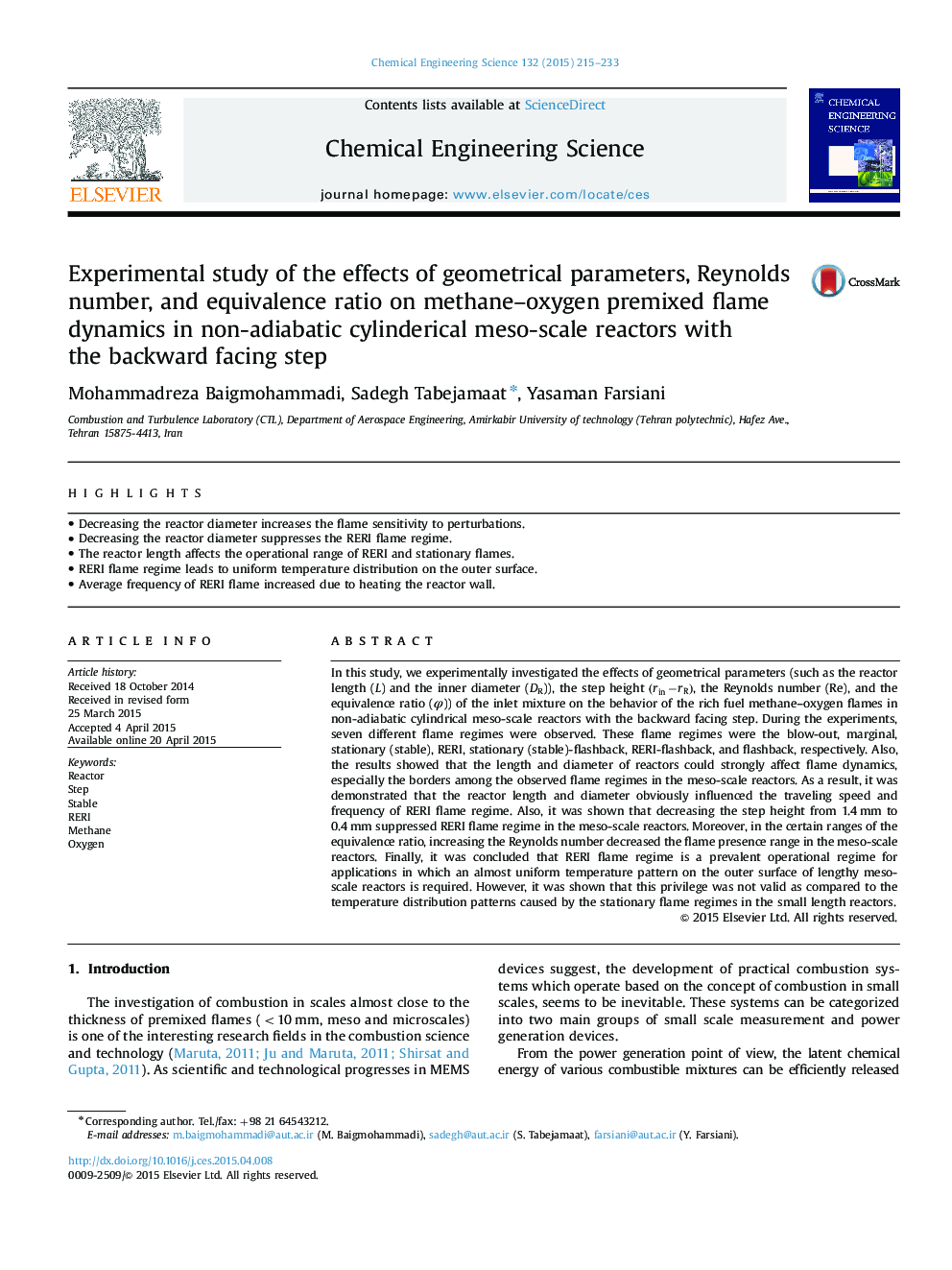| کد مقاله | کد نشریه | سال انتشار | مقاله انگلیسی | نسخه تمام متن |
|---|---|---|---|---|
| 154678 | 456848 | 2015 | 19 صفحه PDF | دانلود رایگان |

• Decreasing the reactor diameter increases the flame sensitivity to perturbations.
• Decreasing the reactor diameter suppresses the RERI flame regime.
• The reactor length affects the operational range of RERI and stationary flames.
• RERI flame regime leads to uniform temperature distribution on the outer surface.
• Average frequency of RERI flame increased due to heating the reactor wall.
In this study, we experimentally investigated the effects of geometrical parameters (such as the reactor length (L) and the inner diameter (DR)), the step height (rin−rR)(rin−rR), the Reynolds number (Re), and the equivalence ratio (φ)) of the inlet mixture on the behavior of the rich fuel methane–oxygen flames in non-adiabatic cylindrical meso-scale reactors with the backward facing step. During the experiments, seven different flame regimes were observed. These flame regimes were the blow-out, marginal, stationary (stable), RERI, stationary (stable)-flashback, RERI-flashback, and flashback, respectively. Also, the results showed that the length and diameter of reactors could strongly affect flame dynamics, especially the borders among the observed flame regimes in the meso-scale reactors. As a result, it was demonstrated that the reactor length and diameter obviously influenced the traveling speed and frequency of RERI flame regime. Also, it was shown that decreasing the step height from 1.4 mm to 0.4 mm suppressed RERI flame regime in the meso-scale reactors. Moreover, in the certain ranges of the equivalence ratio, increasing the Reynolds number decreased the flame presence range in the meso-scale reactors. Finally, it was concluded that RERI flame regime is a prevalent operational regime for applications in which an almost uniform temperature pattern on the outer surface of lengthy meso-scale reactors is required. However, it was shown that this privilege was not valid as compared to the temperature distribution patterns caused by the stationary flame regimes in the small length reactors.
Journal: Chemical Engineering Science - Volume 132, 18 August 2015, Pages 215–233